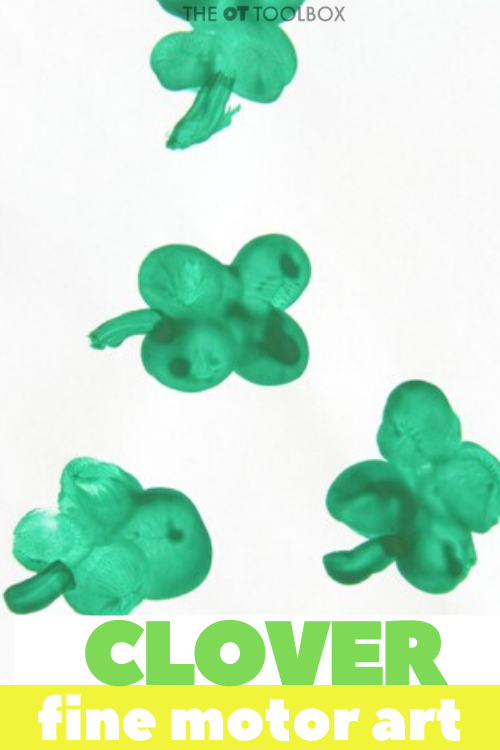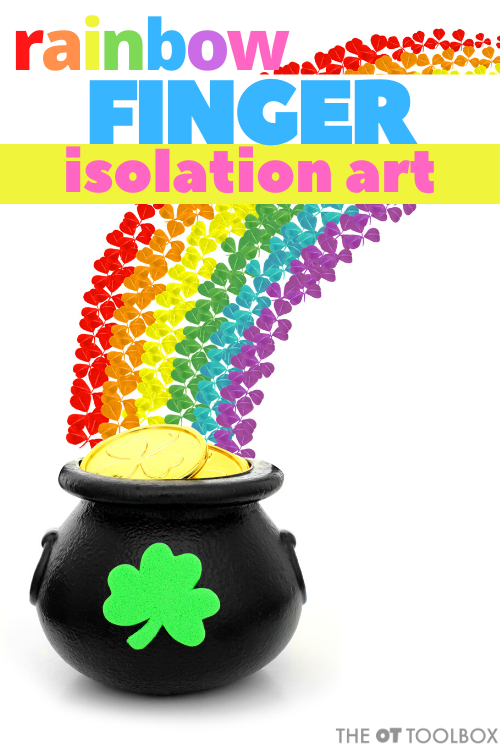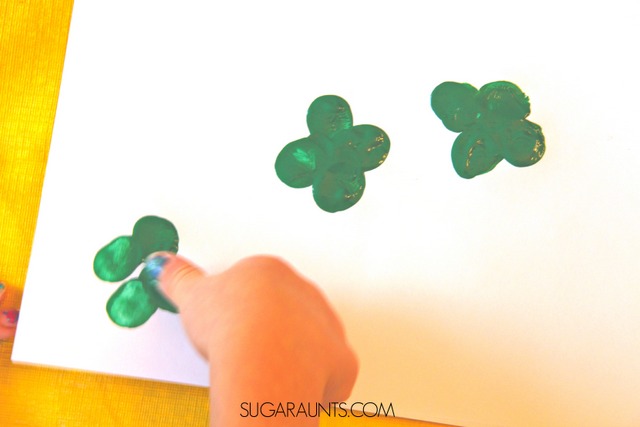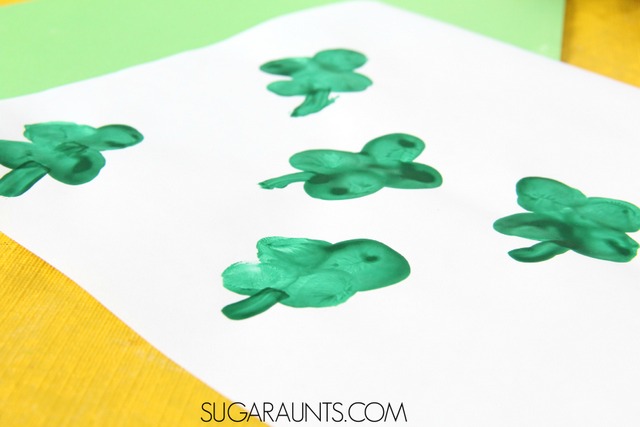Here is a super easy St. Patrick’s Day craft and fingerprint art that builds skills. We made this simple clover thumbprint art one day as we geared up for St. Patrick’s Day. We made four leaf clovers, but you could make shamrocks too. The important part is that kids are getting a great experience with strengthening finger isolation…a much needed fine motor skill for functional tasks like tying shoes, typing, pencil grasp, and so many more dexterity tasks.

Help Kids with Finger Isolation
What is finger isolation? It’s an important fine motor skill! Here is a more detailed explanation of finger isolation and functional tasks, but in short, here’s what you should know:
Finger isolation typically develops in the baby at around 6 months of age as they begin to pick up small pieces of cereal. It progresses to pointing, and then separation of the two sides of the hand with in-hand manipulation. Finger isolation is so important in fine motor dexterity in every task that the hands perform.
Fingerprint art like the four leaf clovers in this St. Patrick’s Day craft promotes isolation of the index finger.
Fingerprint art like this one allows students to isolate one finger and bend (flex) the rest of the fingers into a fist. This is refinement from the fisted hand and “raking” motion that babies and young toddlers demonstrate. To create a fingerprint, the ulnar (pinkie side of the hand) are stabilized with the pinkie and ring fingers bent into the palm, or are positioned with the pinkie finger extended and abducted (spread apart).
This positioning allows the knuckle joints (metacarpals) to stabilize and allow the pointer and middle fingers to be used with more control. The separation of the radial and ulnar sides of the hand allows for more skilled fine motor manipulation.
Rainbow Finger Isolation Art

Take the finger isolation skills a step further by making a whole rainbow of fingerprint art. Here’s how you can make a rainbow craft to work on finger isolation:
- Pour a rainbow variety of paint colors on a paper plate.
- Ask your kiddo wot point their index finger into red. They can make a curved line of red dots on a piece of paper. Ensure the remainder of the fingers are tucked into the palm with the thumb holding them in place.
- Ask them to wipe off their finger for proprioceptive input through the joints of the finger. Talk about awareness and heavy work!
- Move on to orange. They can follow the curve of their rainbow to make each color in rainbow order.
- Wipe off each finger in between colors for more feedback.
Simple St. Patrick’s Day Craft
This post contains affiliate links.
This craft needs just one item (besides the paper you’re printing on!) We love this green paint for it’s bright color. Pour a little on a paper plate and you are ready for fingerprint art.

Show your child how to make a thumbprint using the green paint. Kids can use either their index finger or thumb to make these prints.

Make a little stem using the paint. The four leaf clovers are done! These would be cute on a fun St. Patrick’s Day card, or just for fun.

Colleen Beck, OTR/L has been an occupational therapist since 2000, working in school-based, hand therapy, outpatient peds, EI, and SNF. Colleen created The OT Toolbox to inspire therapists, teachers, and parents with easy and fun tools to help children thrive. Read her story about going from an OT making $3/hour (after paying for kids’ childcare) to a full-time OT resource creator for millions of readers. Want to collaborate? Send an email to contact@theottoolbox.com.






